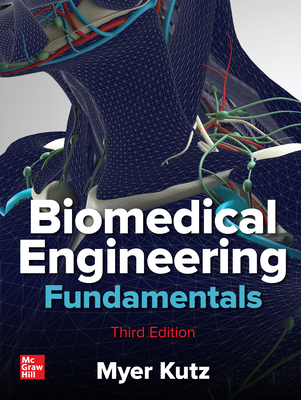The Computational Neurobiology of Reaching and Pointing: A Foundation for Motor Learning (Hardcover)
Reza Shadmehr, Steven P. Wise
- 出版商: MIT
- 出版日期: 2004-10-28
- 售價: $3,320
- 貴賓價: 9.5 折 $3,154
- 語言: 英文
- 頁數: 544
- 裝訂: Hardcover
- ISBN: 0262195089
- ISBN-13: 9780262195089
海外代購書籍(需單獨結帳)
買這商品的人也買了...
-
 深入淺出 Java 程式設計, 2/e (Head First Java, 2/e)
深入淺出 Java 程式設計, 2/e (Head First Java, 2/e)$880$695 -
 $1,224Apple Pro Training Series: Logic Pro 8 and Logic Express 8
$1,224Apple Pro Training Series: Logic Pro 8 and Logic Express 8 -
 $299Advanced Rails Recipes: 72 New Ways to Build Stunning Rails Apps (Paperback)
$299Advanced Rails Recipes: 72 New Ways to Build Stunning Rails Apps (Paperback) -
 Color Imaging: Fundamentals and Applications (Hardcover)
Color Imaging: Fundamentals and Applications (Hardcover)$5,250$4,988 -
 Flash ActionScript 3 殿堂之路
Flash ActionScript 3 殿堂之路$520$411 -
 UML 精華 ─ 增訂 SysML、Real-time 與 Workflow 概念, 3/e (UML Distilled, 3/e)
UML 精華 ─ 增訂 SysML、Real-time 與 Workflow 概念, 3/e (UML Distilled, 3/e)$560$442 -
 Silverlight 2.0 範例權威講座
Silverlight 2.0 範例權威講座$540$427 -
 大話設計模式
大話設計模式$620$527 -
 ASP.NET 專題實務
ASP.NET 專題實務$720$569 -
 重構─改善既有程式的設計, 2/e (Refactoring: Improving The Design of Existing Code)
重構─改善既有程式的設計, 2/e (Refactoring: Improving The Design of Existing Code)$800$632 -
 SIP 會談啟始協議操典, 2/e
SIP 會談啟始協議操典, 2/e$860$679 -
 $990Programming Ruby: The Pragmatic Programmers' Guide, 3/e (Paperback)
$990Programming Ruby: The Pragmatic Programmers' Guide, 3/e (Paperback) -
 ASP.NET 3.5 應用系統專題實作
ASP.NET 3.5 應用系統專題實作$590$460 -
 ASP.NET 專題實務-使用 C#
ASP.NET 專題實務-使用 C#$650$514 -
 Google!Android 手機應用程式設計入門
Google!Android 手機應用程式設計入門$520$411 -
 $1,050Windows Internals: Including Windows Server 2008 and Windows Vista, 5/e (Hardcover)
$1,050Windows Internals: Including Windows Server 2008 and Windows Vista, 5/e (Hardcover) -
 Agile Web Development with Rails, 3/e (Paperback)
Agile Web Development with Rails, 3/e (Paperback)$1,810$1,720 -
 Google Android SDK 開發範例大全
Google Android SDK 開發範例大全$750$638 -
 Google Android 程式設計與應用
Google Android 程式設計與應用$520$411 -
 聖殿祭司的 ASP.NET 3.5 專家技術手冊 I 核心功能篇-使用 C#
聖殿祭司的 ASP.NET 3.5 專家技術手冊 I 核心功能篇-使用 C#$650$514 -
 Flash 動畫設計魔法書
Flash 動畫設計魔法書$550$468 -
 jQuery 開發實戰 (Learning jQuery 1.3)
jQuery 開發實戰 (Learning jQuery 1.3)$520$442 -
 跟 Adobe 徹底研究 ActionScript 3.0 (ActionScript 3.0 for Adobe Flash CS4 Professional Classroom in a Book)
跟 Adobe 徹底研究 ActionScript 3.0 (ActionScript 3.0 for Adobe Flash CS4 Professional Classroom in a Book)$620$527 -
 Linux 專業認證手冊 LPIC-101
Linux 專業認證手冊 LPIC-101$580$458 -
 ASP.NET 3.5 圖表與實務案例模組大全-使用 VC#
ASP.NET 3.5 圖表與實務案例模組大全-使用 VC#$750$593
相關主題
商品描述
Neuroscience involves the study of the nervous system, and its topics range from genetics to inferential reasoning. At its heart, however, lies a search for understanding how the environment affects the nervous system and how the nervous system, in turn, empowers us to interact with and alter our environment. This empowerment requires motor learning. The Computational Neurobiology of Reaching and Pointing addresses the neural mechanisms of one important form of motor learning. The authors integrate material from the computational, behavioral, and neural sciences of motor control that is not available in any other single source. The result is a unified, comprehensive model of reaching and pointing. The book is intended to be used as a text by graduate students in both neuroscience and bioengineering and as a reference source by experts in neuroscience, robotics, and other disciplines.The book begins with an overview of the evolution, anatomy, and physiology of the motor system, including the mechanisms for generating force and maintaining limb stability. The sections that follow, "Computing Locations and Displacements," "Skills, Adaptations, and Trajectories," and "Predictions, Decisions, and Flexibility," present a theory of sensorially guided reaching and pointing that evolves organically based on computational principles rather than a traditional structure-by-structure approach. The book also includes five appendixes that provide brief refreshers on fundamentals of biology, mathematics, physics, and neurophysiology, as well as a glossary of relevant terms. The authors have also made supplemental materials available on the Internet. These web documents provide source code for simulations, step-by-step derivations of certain mathematical formulations, and expanded explanations of some concepts.































